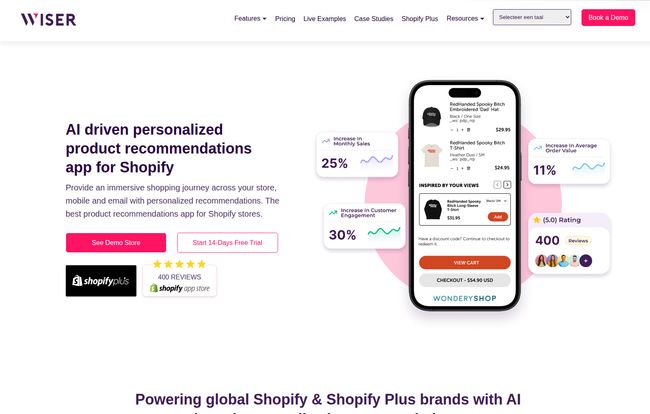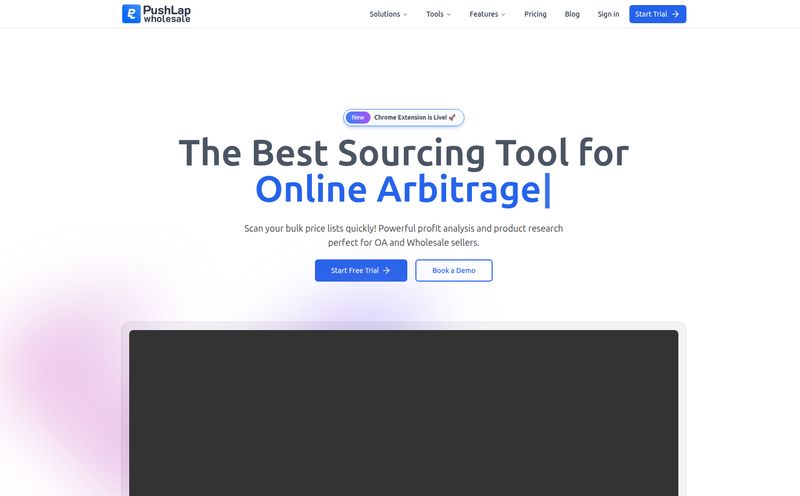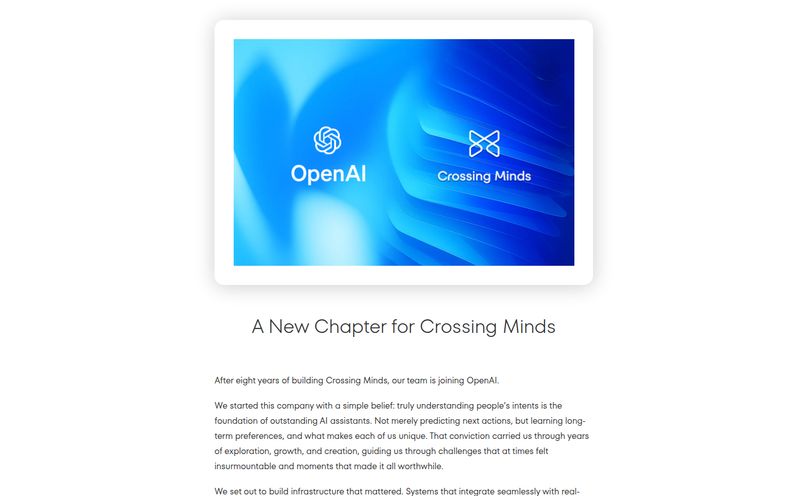You and me. We’ve all been there. Staring at our Shopify analytics, chugging that third cup of coffee, and wondering, "How do I get people to just… buy one more thing?" The traffic is there. The products are good. But the average order value (AOV) is flatter than a pancake on a Sunday morning.
Every year, a new wave of AI-powered apps washes over the Shopify App Store, each promising to be the silver bullet for our conversion woes. So when I first heard about Wiser, I'll admit, my inner cynic raised an eyebrow. Another AI personalization tool? Groundbreaking. But then I saw some of the brands using it—names like Afends and Fun Club—and I thought, okay, maybe there's something more here. Maybe this isn't just another drop in the bucket.
So, I decided to take a proper look, peel back the marketing layers, and see if Wiser is the real deal for store owners who are serious about growth. Let's get into it.
So, What Exactly is Wiser, Anyway?
At its core, Wiser is an AI-driven product recommendation app for Shopify. But that’s a bit of a dry description. Think of it less like a static "You might also like..." widget and more like a smart, digital store clerk. It watches how customers browse your site, what they click on, what they've bought before, and uses all that data to whisper in their ear, "Hey, since you liked that, you're really going to love this."
It’s an attempt to replicate that personalized, almost boutique-like shopping experience online. We all know Amazon's recommendation engine is the Death Star in this space; it's brutally effective. Tools like Wiser are basically the Rebellion's attempt to give the rest of us our own X-Wing to fight back with. It’s all about showing the right product to the right person at the right time to nudge that AOV and conversion rate upwards. And according to them, it can drive up to 35% higher conversions. A bold claim, for sure.
The Features That Actually Move the Needle
An app can have a million features, but I only care about the ones that actually make a difference to my bottom line. Wiser has a few that genuinely caught my attention.
The AI Brain Behind the Operation
This is Wiser's bread and butter. The AI-based personalization. It’s not just pulling random products from the same collection. It analyzes behavior to power widgets like "Inspired by Your Browsing History" and "Recently Viewed." This creates a sense of a store that understands the shopper. It’s a subtle shift from a passive catalog to an interactive experience, and it's where the magic is supposed to happen.
Putting Recommendations Everywhere That Counts
Wiser lets you strategically place recommendation widgets across your entire site. You can have them on the homepage, product pages, the cart page, and even the thank you page. My personal favorite spot? The cart page. Someone is this close to checking out, and a well-placed "Frequently Bought Together" or "Complete the Look" widget is often all it takes to add another item. They also have a cool "Smart Upsell Popup" which, if used sparingly, can be a powerful pattern-interrupt to suggest a better or related item.

Visit Wiser
Beyond the Storefront: Email and A/B Testing
This is huge for me. Wiser integrates directly with email marketing powerhouses like Klaviyo and MailChimp. This means you can pull those same smart, AI-driven recommendations directly into your email campaigns. Abandoned cart emails become infinitely more powerful when you can show personalized recommendations instead of just the item they left behind. It’s a smart, cohesive strategy.
And then there's the A/B testing. Oh, the A/B testing! As someone who geeks out on conversion rate optimization (CRO), this is gold. You can test different recommendation types against each other to see what actually works for your audience. No more guessing. You can let the data tell you if "Trending Products" converts better than "New Arrivals" on your homepage. For any serious store owner, this feature alone is worth the price of admission.
Getting Real About the Wiser Experience
Okay, let's cut the fluff. What's it actually like to use? Here's my honest take on the good and the... well, the things to be aware of.
The Good Stuff: What I Liked
First off, the sheer number of recommendation types is impressive. From standard related products to more nuanced things like manual recommendations (where you have full control), you have a lot of tools in your toolbox. The AI, from what I can tell, is genuinely smart and gets better over time as it collects more data.
I've always believed that good marketing feels like good customer service. Wiser seems to get this. It's focused on being helpful to the customer, and the sales follow as a result.
The customer service also gets a lot of praise in public reviews, and that shouldn't be overlooked. When you're dealing with an app that plugs so deeply into your store's theme and customer journey, responsive support is not a luxury; it's a necessity.
The Not-So-Good: Potential Hurdles
Now, for a dose of reality. This isn't a magical "one-click install" solution. To get the most out of Wiser, you need to put in some thought. You have to configure the widgets, decide where they go, and ideally, run some A/B tests. It requires a bit of a hands-on approach, especially in the beginning. If you're looking for something completely set-it-and-forget-it, this might feel like a little bit of work.
Also, the pricing model is tied to your monthly orders. For a store on a high-growth trajectory, this can make budgeting a little tricky. You can jump from one pricing tier to the next pretty quickly. It's a classic "good problem to have," but something to keep an eye on. Some of the juiciest features, like Post Purchase Upsells and Checkout Page Recommendations, are also locked away in the high-tier Enterprise plan, which is pretty standard practice but always a bit of a bummer for smaller, scrappy stores.
Let's Talk Money: The Wiser Pricing Structure
Pricing can make or break an app's appeal, and Wiser has an interesting approach. It's essentially a two-tiered system based on order volume.
The most eye-catching part is the Free plan. For stores doing 0 to 50 orders per month, it's genuinely free. And it's not a useless, stripped-down version either. You get AI recommendations, 'Frequently Bought Together', analytics, email recommendations, and smart upsell popups. This is an incredible offer for new stores looking to establish a foothold without piling on monthly expenses.
Here’s a simplified look at the plans:
| Plan | Cost | Best For | Key Features |
|---|---|---|---|
| Free | $0 /mo | New stores (0-50 orders/mo) | AI Recommendations, FBT, Analytics, Email Recs, Upsell Popups |
| Enterprise | Contact Sales | Large brands (>5000 orders/mo) | All features, plus Post Purchase Upsell, API Access, Dedicated Manager |
Once you cross 50 orders, the plans begin to scale up in price until you hit the Enterprise level, which is for stores with over 5000 orders a month. That plan is a different beast entirely, with API access, a dedicated success manager, and the most advanced features. It’s for the big leagues, and you'll need to book a demo to get pricing.
Final Thoughts from an Old SEO Hand
So, is Wiser worth it? In my experience, tools that successfully boost AOV and conversion rates pay for themselves many times over. Wiser seems to have the right combination of powerful features, a smart AI engine, and critical integrations to be a serious contender.
It’s not a magic wand. You can’t just install it and expect sales to triple overnight. But if you’re willing to spend a little time configuring it, testing different approaches, and thinking strategically about where to place your recommendations, the potential for a significant return is definitely there. For new stores, the free plan is a complete no-brainer. Test it out, see if it works for you, and go from there. For larger stores, the question isn't if you should use a personalization tool, but which one. Wiser has certainly earned its spot on the shortlist.
Frequently Asked Questions about Wiser
- How does Wiser's billing work?
- It's based on the number of orders your store processes per month. They have a Free plan for up to 50 orders, and then the pricing scales up as your order volume grows. If you exceed 5000 orders, you move to a custom Enterprise plan.
- Can I customize the look of the recommendation widgets?
- Yes, you can. While it requires some setup, the widgets can be customized to match your store's branding and theme, so they don’t look like a generic, tacked-on element. This is really important for maintaining brand consistency.
- What happens if my store grows past 5000 orders?
- Once you cross that threshold, you'll need to get in touch with their sales team to move onto the Enterprise plan. This plan includes more advanced features and a dedicated support manager to help you optimize.
- Does Wiser slow down my store?
- This is a common concern with any third-party Shopify app. Wiser claims to be optimized for performance. In my experience, most modern, well-coded apps like this have a minimal impact, but its always a good idea to run a site speed test before and after installing any new app to be sure.
- What other apps does Wiser integrate with?
- The big ones are email providers like Klaviyo and Mailchimp. The images on their site also show logos for other popular apps like Loox for reviews and PageFly for page building, suggesting a good ecosystem of integrations to create a more unified marketing stack.
Conclusion
In the crowded world of Shopify apps, Wiser manages to stand out. It’s a powerful, intelligent, and surprisingly accessible personalization tool. The generous free plan removes any barrier to entry for new store owners, and the advanced features provide a clear growth path for scaling brands. If you've been looking for a way to make your store a little smarter and your shopping experience a little more personal, Wiser is absolutely worth a test drive.



